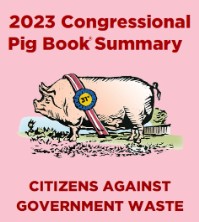
Sell Excess Federal Real Property
1-Year Savings: $3 billion
5-Year Savings: $15 billion
Due to a combination of negative incentives and unnecessary red tape, selling federal real estate is a long, costly process. Reforms are essential, because Uncle Sam owns more real property than any other entity in America: approximately 267,000 buildings and structures covering 1. billion square feet of office space. An October 31, 2017, Congressional Research Service (CRS) report found that, “In FY 2016, federal agencies owned 3,120 buildings that were vacant (unutilized), and another 7,859 that were partially empty (underutilized).”
In FY 2022, the General Services Administration (GSA) reported total assets of $59 billion, an increase of 17.3 percent from the $50.3 billion from FY 2021. These include more than “363 million square feet of space in 8,397 buildings in more than 2,200 communities nationwide.”
When the GSA Public Buildings Service reports a property as excess, that property must first be screened for use by other federal agencies. If another agency wants it, that agency gets it. If the property goes unclaimed by every eligible agency, according to Title 40 of the U.S. Code and the McKinney Vento Homeless Assistance Act, it must be screened for use by providers of homeless shelters, who can use the property for free. If shelters are not interested, the property is screened for other public uses and sold for up to a 100 percent discount of market value. Finally, if no public use can be identified, the property is auctioned and sold. That process is upside down: The government should first try to sell the property and give it away only if there is no other alternative.
The government’s current leasing practices are also problematic. They have been on the GAO’s High Risk List since January 1, 2003. According to the April 20, 2023, report, GSA’s “efforts to improve the accuracy of addresses in its Federal Real Property Profile database have yet to show tangible results. This makes it difficult to manage federally owned assets.”





























Recent Comments